Inductors
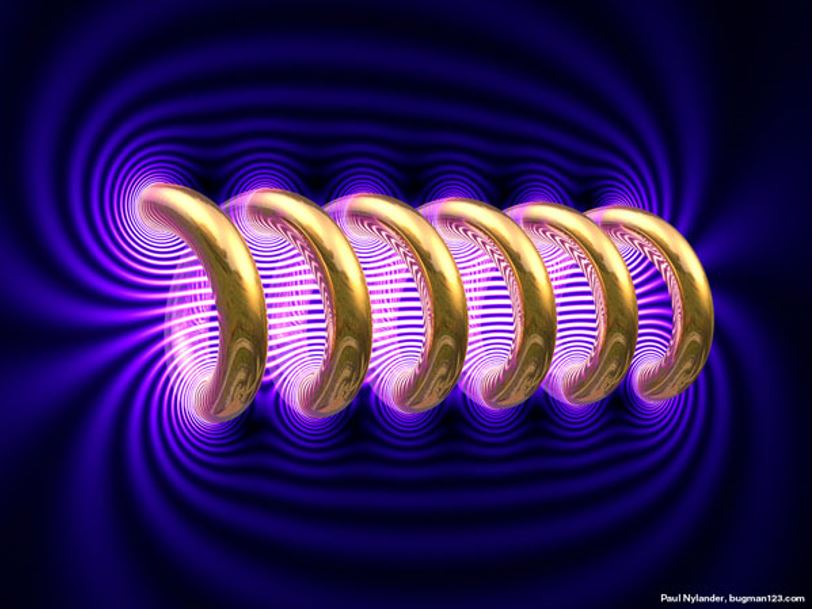
image source
A coil of wire can store potential energy in its magnetic field. It can be useful to include a coil as a component in an electric circuit. We call this kind of circuit component an "inductor" and symbolize it with a spiral.
Inductance L is defined as magnetic flux per current.
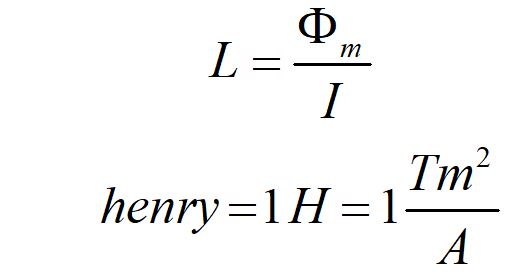
The unit of induction is the henry, and is defined as one tesla meter squared per ampere.
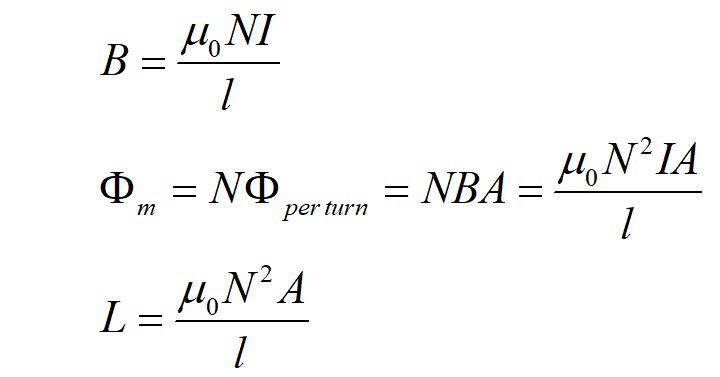
We use our definition of the magnetic field of a solenoid of N turns and cross-sectional area A and length l to find the inductance of an inductor with current I. Here, the magnetic flux is just BA.
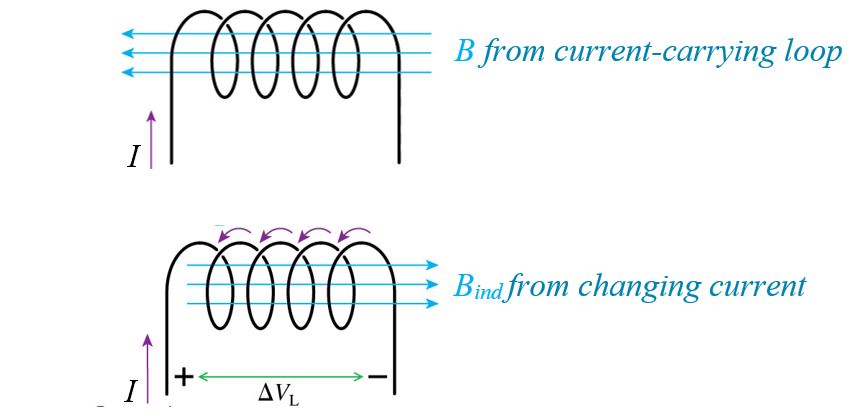
Current going through an inductor creates a magnetic field B. If the current is changing, an induced magnetic field opposes the change in magnetic flux. The induced current carries positive charges (to the left in the diagram). This charge separation creates a potential difference across the inductor.
In essence, the inductor acts like a battery in the circuit that opposes the change in current.

We can use Faraday's law to determine the induced EMF across an inductor interms of the changing magnetic flux or in terms of the inductance and the changing current.
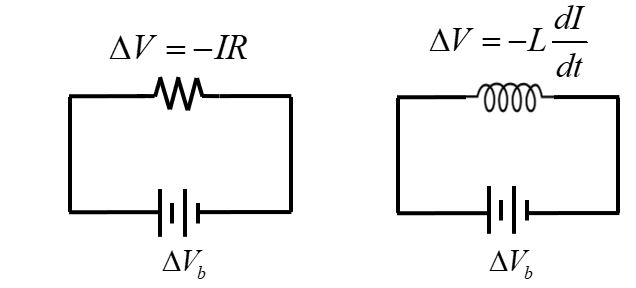
Recall that the voltage drops across a resistor when the path is in the same direction as the current. For an inductor, the potential decreases if the current is increasing, and the potential increases if the current is decreasing.
Energy stored in magnetic field
Recall that capacitors store energy between their plates as electrical potential energy. Inductors can store energy in the their magnetic fields.
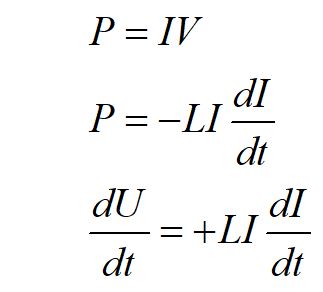
We can find the potential energy stored in the magnetic field of an inductor by considering the potential lost across an inductor. By conservation of energy, the magnetic potential energy stored by an inductor must be equal but opposite in sign to the electric potential energy lost by the inductor.
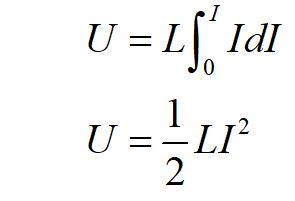
We evaluate the integral over the currrent I to find the energy stored in the magnetic field.
We can find the potential energy stored in the magnetic field of an inductor by considering the potential lost across an inductor. By conservation of energy, the magnetic potential energy stored by an inductor must be equal but opposite in sign to the electric potential energy lost by the inductor.
We evaluate the integral over the currrent I to find the energy stored in the magnetic field.